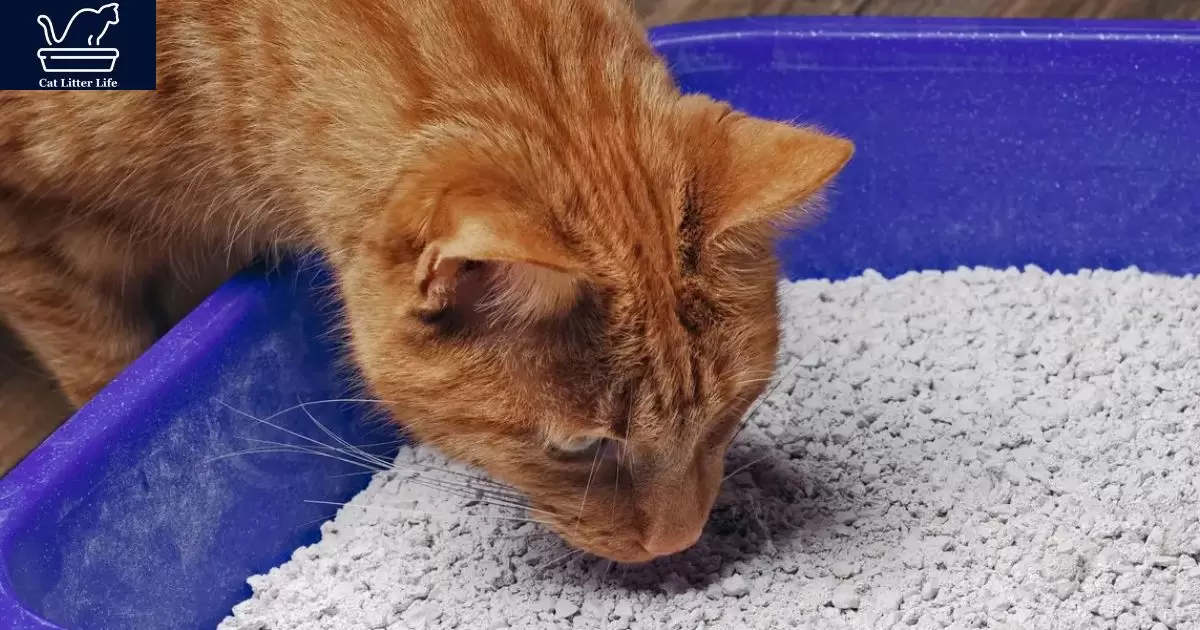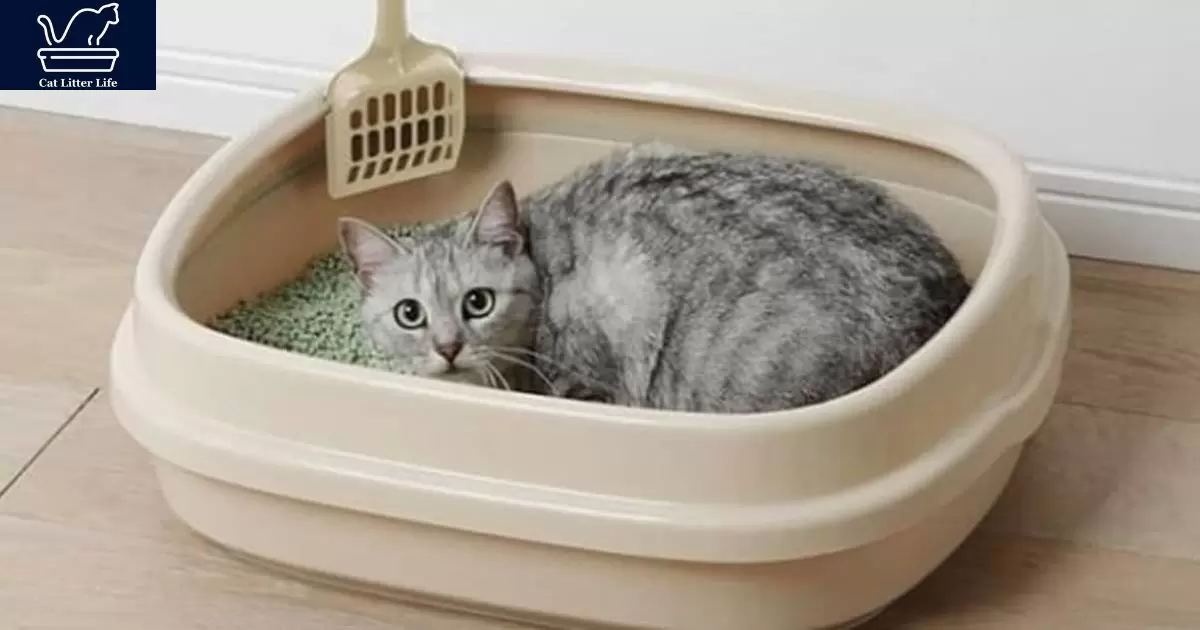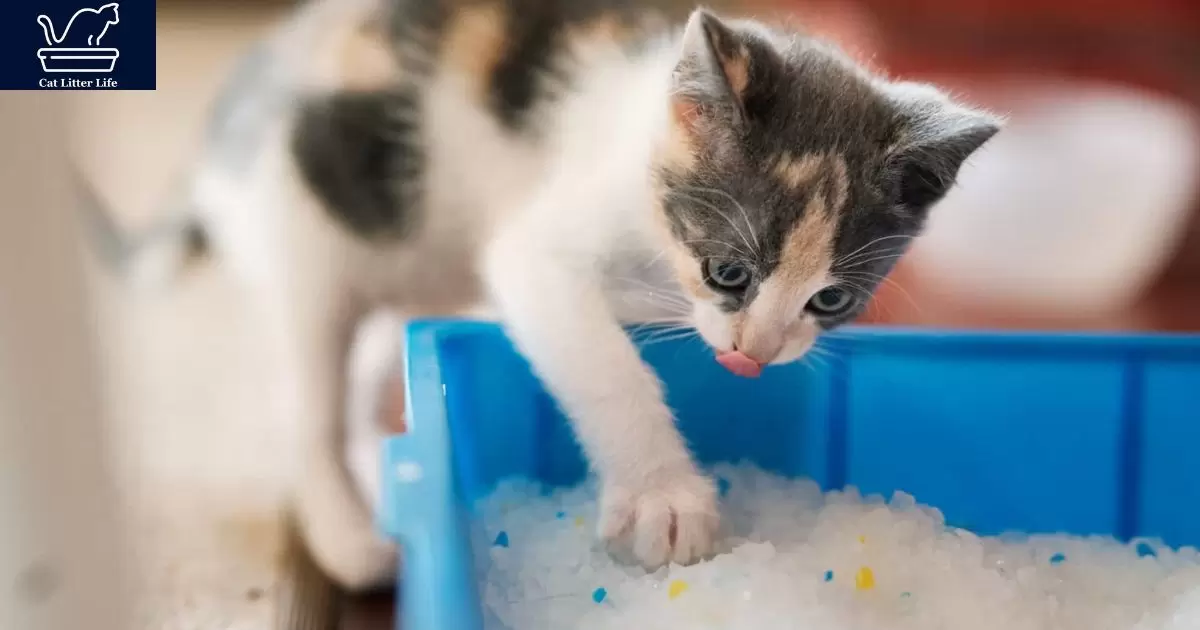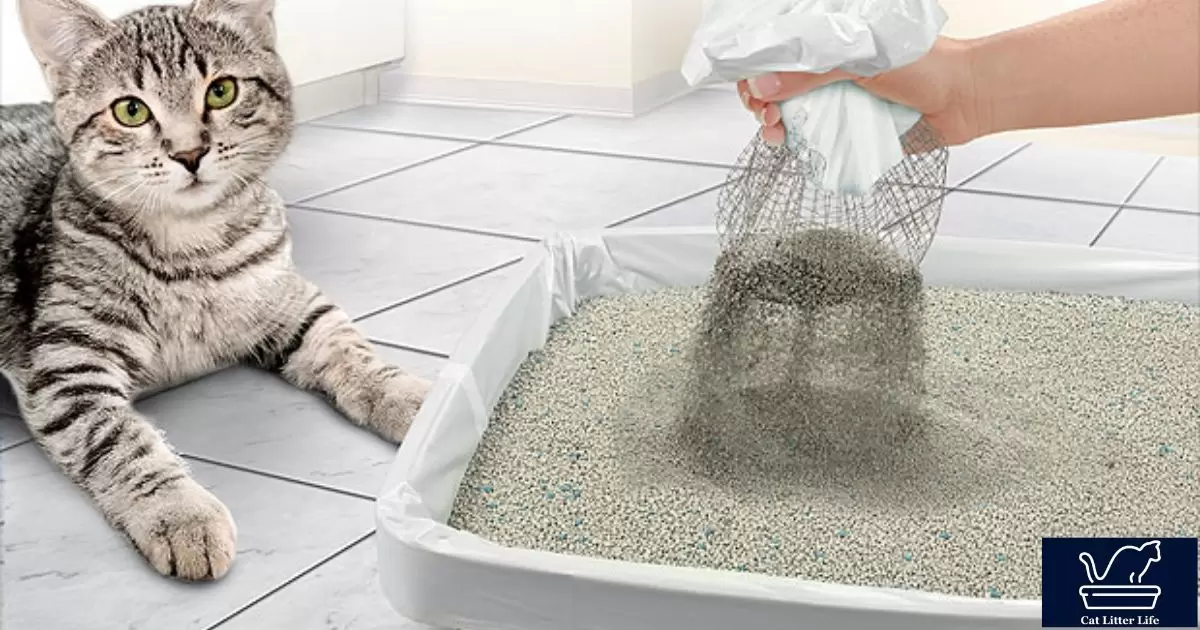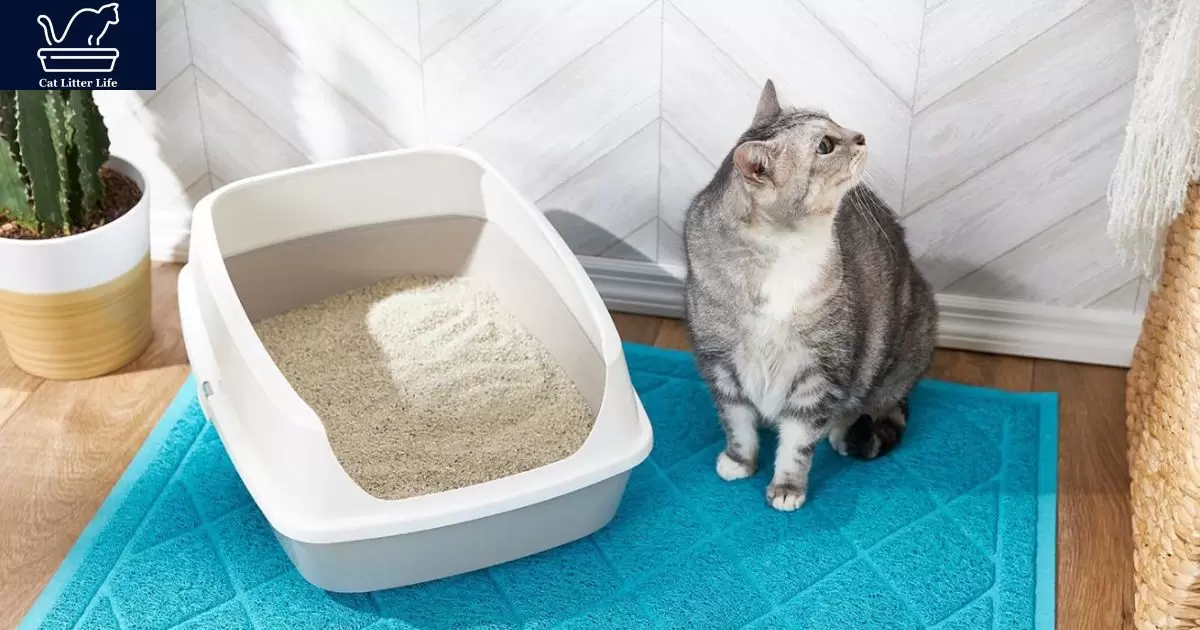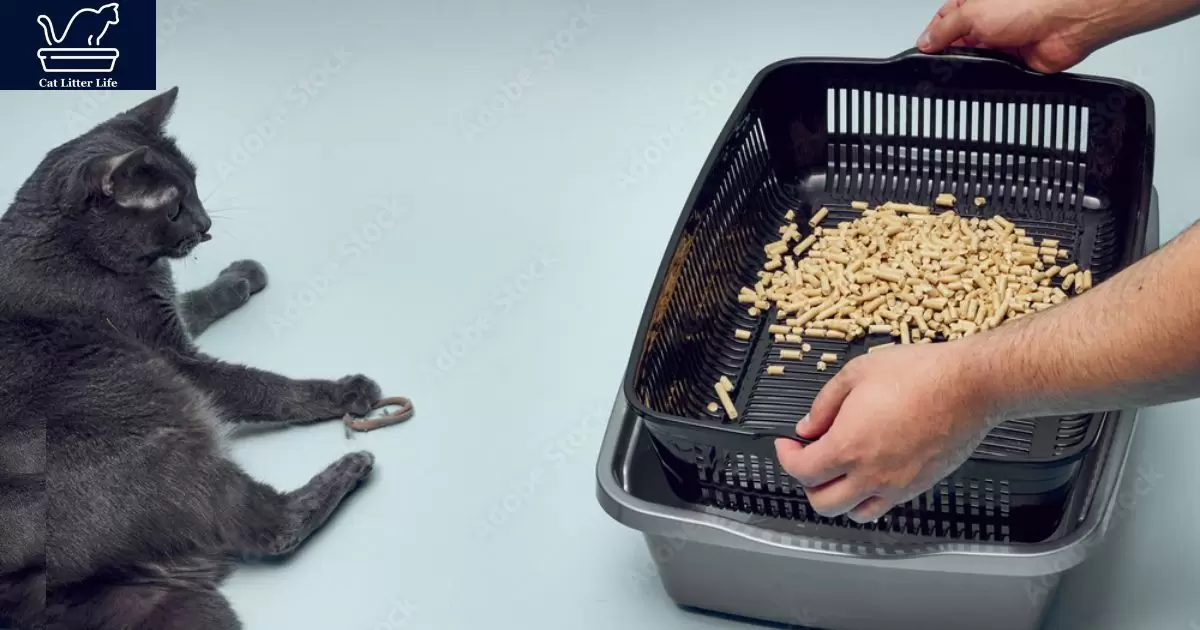My female cat laying in the litter box refers to when a woman pussycat spends more time than normal resting inner her litter box without the use of it to urinate or defecate. This conduct in cats can represent contamination, soreness, or that something may be stressing her.
Why is my female cat laying in the litter box? This strange behavior naturally prompts worried cat owners to ask this very question. While this dependency may additionally appear ordinary, understanding the ability motives in the back of it is key to properly being concerned for her needs.
There are several possible explanations for a female cat again and again laying in her litter box. It could relate to health issues like UTIs or arthritis causing pain when eliminating waste. Or perhaps the location makes her feel safe and secure. Regardless, identifying the root cause will provide insight to address it appropriately.
Reasons My Female Cat Laying in Litter Box Niche
My female cat laying in her litter box excessively could signal medical problems causing pain or irritation when urinating. Issues like UTIs, arthritis, or digestive troubles may lead her to seek comfort inside the box. Vet exams can diagnose conditions prompting this behavior.
Alternatively, stress factors like loud noises, construction, or new pets may cause nesting behaviors inside the secure, enclosed space of the litter box. Identifying and minimizing anxiety triggers in her environment, perhaps by opting for lightweight cat litter, could stop this habit naturally.
Health Issues Causing Discomfort
Underlying illnesses like UTIs, arthritis, or constipation can make eliminating incredibly painful. The litter substrate may feel soothing against irritated areas or injuries. Diagnostic testing is crucial to treat medical problems prompting litter box laying.
Discomfort when urinating or defecating due to infection, inflammation, or joint issues understandably makes the litter box seem like a refuge. Treating health conditions can resolve inappropriate litter habits in distressed cats.
Behavioral Changes Due to Stress
Sudden loud noises, children, construction sounds, or new pets are potential stress triggers. The enclosed, secure litter box offers comforting isolation from frightening chaos.
Environmental changes can overwhelm cats, while the familiar litter box grants safety amidst the anxiety and tension. Identifying and minimizing stressors may curb inappropriate litter box-laying behaviors.
Nesting Behaviors During Pregnancy
As a cat’s due date approaches, hormonal changes prompt nesting instincts like gathering soft materials and scoping safe locations to deliver her litter. This explains a pregnant cat’s sudden affinity for blankets, cushions, and even her litter box when preparing to give birth.
The nesting urge manifests practically overnight, turning an aloof feline into a dedicated mother-to-be as she tries making a comfortable birthing area. Though strange, these behaviors are driven by nature to ensure her kittens enter the world in a warm, secluded, protected space she deems nurturing.
Medical Conditions Associated With This Behavior Niche
Urinary tract infections (UTIs) can cause female cats soreness when urinating, leading them to keep away from the muddle field. UTIs cause painful infections of the urinary tract, making removal uncomfortable. Antibiotics from a veterinarian clear up UTIs, resolving litter box avoidance.
When arthritis causes joint pain, using the litter box may be difficult for a female cat. The act of climbing in and out can hurt arthritic joints. Seeking warmth, she lays inside instead of perching on the edge. Joint supplements and pain remedies can assist ease arthritis.
Urinary Tract Infections
Feline decrease urinary tract infection consists of infection or contamination of the bladder or urethra. Struvite crystals or bacteria like E. Coli frequently cause contamination. Female cats are especially prone to developing these painful UTIs.
Antibiotic treatment is needed to clear up a UTI and stop the painful urination it causes. Catching and treating a UTI quickly reduces irrelevant muddle box conduct stemming from pain.
Arthritis and Joint Pain
Just like humans, cats can experience painful arthritis as they age. Jumping in and out of litter boxes can become difficult with sore joints. This causes cats to display inappropriate elimination habits.
Arthritis ends in irritation and stiffness in joints. Cold weather can also worsen the discomfort. Veterinarians can prescribe joint supplements and pain medications to bring relief. Ensuring low-entry, easily accessible litter boxes also helps.
Digestive Issues Like Constipation: My Female Cat Laying In The Litter Box
Constipation or difficulty defecating can make cats avoid their litter boxes. They associate the location with discomfort and seek alternatives. Ensuring proper hydration and fiber intake minimizes constipation issues. Veterinary exams also check for underlying causes like colitis. Addressing the root problem solves litter box problems.
Environmental Stressors Prompting This Behavior Niche
My female cat may lay in her litter box due to stress from environmental changes, like moving the box’s location or loud noises startling her while inside it. These types of stressors can cause anxiety, making her seek comfort in the enclosed, safe space of her box.
Shifting where the litter box sits in the home disrupts habitual routines for cats. The sudden change of its set place can distress female felines, prompting them to lay down inside it for security, especially more sensitive and skittish individuals.
Changes to Litter Box Location
Cats can be particular about their litter boxes, so moving them to a new spot may cause confusion or stress. Gradually transition the box location in small increments over days or weeks. This gives the kitty time to adjust while still having access to a familiar toilet area.
If an immediate litter box relocation is unavoidable, place the old box nearby so your cat can still find and use it. Slowly move the original box closer to the new location over a couple of weeks. Be patient and offer treats as positive reinforcement during this transitional period.
Pregnancy and Motherhood Factors Niche
My pregnant cat seeks solace in her litter box as she prepares a nesting area for the impending kittens. The enclosed space offers privacy and comfort as maternal instincts guide her actions before giving birth. Once the kittens arrive, the box allows a protective watch while permitting the feeding and caring she provides.
As the kittens grow in the first weeks, the litter box continues housing the young family. My nursing mother cat frequently enters to feed her babies, stimulate waste elimination, and keep them warm and secure. Only after the kittens become mobile does this central location become less critical for their care.
Preparing a Nest in the Litter Box
Expectant felines burrow in litter to ready for birth by scraping out a formfitting place to deliver their young. My cat is exhibiting this nesting behavior as hormones signal pending cat labor is nearing. The box allows seclusion from other pets so she concentrates solely on getting ready.
Pregnant cats nest in hidden areas with low foot traffic offering warmth and privacy. The litter itself soothes the digging instinct to ready her selected spot until the kittens come. My cat repeatedly enters her box to fluff and shape in preparation to give birth there.
Giving Birth in the Litter Box
As the arrival nears, my pregnant cat only leaves the litter box for short periods because the enclosed space now provides comfort. When contractions start, she will rely on instincts to strain and birth each kitten into the waiting nest.
The litter lining the box where she will deliver the kittens absorbs fluids and keeps newborns clean and dry. My cat will remove birthing sacs from each kitten as she licks them after arrival. The box provides an ideal first environment once all have been born.
Caring For Kittens in the Litter Box
My nursing mother cat continues residing primarily inside the litter box initially so she can feed and care for helpless newborn kittens. This maintains a protective watch until they grow more mobile.
The kittens snuggle into the curved shape my cat creates when preparing to give birth. She frequently enters the box to nurse, groom, and stimulate elimination during the early weeks. The litter box remains central to rearing the litter as they grow.
Solutions to Stop This Behavior Niche
Veterinary exams are crucial to check a cat’s health when they display this peculiar litter box behavior. Full physical checkups and lab tests can diagnose medical issues causing discomfort or illness. Once diagnosed, proper treatment can provide relief and curb continuing litter box issues.
Addressing sources of stress is key to stopping recurring inappropriate litter habits. New loud appliances, construction noises, changes in home layout, new pets, or strangers can unsettle cats. Mitigating stressors by moving litter locations, blocking loud noise, opening escape routes, or slowing pet introductions can ease anxiety.
Veterinary Exams to Check Health
Scheduling a prompt vet visit when a cat starts frequently laying in her litter box allows a full exam to check for infections or pain causing this behavior. Diagnostic tests like urinalyses, bloodwork, x-rays, or ultrasounds are useful to uncover medical problems. With diagnoses from lab results, vets can provide medications, therapies, or suggestions to relieve discomfort.
Cats should receive full veterinary checkups including physical manipulation to check for arthritis or tender areas that could signal illness or injuries leading to inappropriate litter box habits. Older cats are especially prone to joint issues that may cause litter box discomfort. Vet examinations can detect these problems early.
Address Sources of Stress
Cats are very sensitive to environmental changes that can cause anxiety and prompt atypical behaviors like laying excessively in litter boxes. Gradual introductions to changes in home layouts, new loud appliances like vacuums, or new pets can help cats adjust without stress. Providing escape routes and cat trees for hiding can also minimize stressors.
If construction, loud noises from devices or weather, new animals, or strangers are stressing cats, mitigate the stimuli. Use noise machines to dull sounds or allow access to quiet, enclosed rooms as sanctuaries. Slowly introduce new pets first by scent, then limited supervised interaction to avoid anxiety. Limit visitors if they unsettle your cat. Reducing stress this way can curb litter box issues.
Ensure Proper Litter Box Conditions
Always provide at least one litter box per cat in households, plus one extra. Boxes should be large enough for cats to move around, with litter deep enough for digging. Place boxes in quiet locations easily accessed by cats. Keep boxes clean by scooping waste daily and changing litter regularly. Proper conditions reduce stress.
Cats may lay in litter boxes excessively if the boxes are too small, crowded, dirty, or located in loud, high-traffic areas. Ensure boxes meet cats’ needs by providing extra large boxes, one per cat plus one spare, placed in accessible but private areas. Keep litter clean and odor-free by scooping waste at least once daily. Appropriate litter box conditions minimize inappropriate elimination habits.
FAQ’s
What health issues cause inappropriate litter box behavior?
Urinary tract infections, arthritis, digestive problems like constipation, pregnancy, and post-natal care can cause discomfort leading to excessive litter box laying.
How can I ease my cat’s stress about litter box changes?
Gradually transition litter brands, slowly move box locations, introduce new pets carefully, and mitigate loud noises to avoid the stress that prompts abnormal litter habits.
Why does my cat lay in a dirty litter box?
Cats may continue using dirty boxes to eliminate as close as possible to their preferred location. Scoop waste daily and change litter regularly.
How many litter boxes should I have per cat?
Provide at least one extra litter box per cat, as well as clean boxes often to prevent inappropriate elimination like laying excessively.
What should I ask my vet about litter box problems?
Discuss any physical discomfort, lab test results for UTIs or other issues, medication options, and suggestions like additional boxes or litter types to stop litter box laying.
Conclusion
In summary, there are various potential reasons behind the peculiar behavior of a female cat laying excessively in her litter box. It often indicates an underlying medical issue causing pain or discomfort when urinating or defecating, like UTIs, arthritis, or digestive problems. Environmental stressors like changes to litter box location or brand, loud noises, construction, new pets, or lack of cleanliness can also prompt this concerning litter box habit.
Additionally, female cats may lay in the box more often when pregnant or nursing kittens, either creating a nest or caring for newborns. Whatever the reason for a female cat repeatedly laying in the litter box, identifying the root cause through vet exams and mitigating stressors allows proper treatment.
Ensuring proper litter box conditions, numbers, location, and gradual transitions is also key to stopping inappropriate litter box laying. First Time Cat Owner Guide should include attentive care to address medical issues, reduce anxiety, and meet litter needs, so female cat owners can curb the behavior of excessive laying in the litter box. Getting to the bottom of, why is my female cat laying in the litter box? it leads to solutions for her health and happiness.
